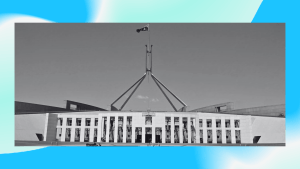Ethics & Policy
IBM’s Francesca Rossi on AI Ethics: Insights for Engineers
As a computer scientist who has been immersed in AI ethics for about a decade, I’ve witnessed firsthand how the field has evolved. Today, a growing number of engineers find themselves developing AI solutions while navigating complex ethical considerations. Beyond technical expertise, responsible AI deployment requires a nuanced understanding of ethical implications.
In my role as IBM’s AI ethics global leader, I’ve observed a significant shift in how AI engineers must operate. They are no longer just talking to other AI engineers about how to build the technology. Now they need to engage with those who understand how their creations will affect the communities using these services. Several years ago at IBM, we recognized that AI engineers needed to incorporate additional steps into their development process, both technical and administrative. We created a playbook providing the right tools for testing issues like bias and privacy. But understanding how to use these tools properly is crucial. For instance, there are many different definitions of fairness in AI. Determining which definition applies requires consultation with the affected community, clients, and end users.
 In her role at IBM, Francesca Rossi cochairs the company’s AI ethics board to help determine its core principles and internal processes. Francesca Rossi
In her role at IBM, Francesca Rossi cochairs the company’s AI ethics board to help determine its core principles and internal processes. Francesca Rossi
Education plays a vital role in this process. When piloting our AI ethics playbook with AI engineering teams, one team believed their project was free from bias concerns because it didn’t include protected variables like race or gender. They didn’t realize that other features, such as zip code, could serve as proxies correlated to protected variables. Engineers sometimes believe that technological problems can be solved with technological solutions. While software tools are useful, they’re just the beginning. The greater challenge lies in learning to communicate and collaborate effectively with diverse stakeholders.
The pressure to rapidly release new AI products and tools may create tension with thorough ethical evaluation. This is why we established centralized AI ethics governance through an AI ethics board at IBM. Often, individual project teams face deadlines and quarterly results, making it difficult for them to fully consider broader impacts on reputation or client trust. Principles and internal processes should be centralized. Our clients—other companies—increasingly demand solutions that respect certain values. Additionally, regulations in some regions now mandate ethical considerations. Even major AI conferences require papers to discuss ethical implications of the research, pushing AI researchers to consider the impact of their work.
At IBM, we began by developing tools focused on key issues like privacy, explainability, fairness, and transparency. For each concern, we created an open-source tool kit with code guidelines and tutorials to help engineers implement them effectively. But as technology evolves, so do the ethical challenges. With generative AI, for example, we face new concerns about potentially offensive or violent content creation, as well as hallucinations. As part of IBM’s family of Granite models, we’ve developed safeguarding models that evaluate both input prompts and outputs for issues like factuality and harmful content. These model capabilities serve both our internal needs and those of our clients.
While software tools are useful, they’re just the beginning. The greater challenge lies in learning to communicate and collaborate effectively.
Company governance structures must remain agile enough to adapt to technological evolution. We continually assess how new developments like generative AI and agentic AI might amplify or reduce certain risks. When releasing models as open source, we evaluate whether this introduces new risks and what safeguards are needed.
For AI solutions raising ethical red flags, we have an internal review process that may lead to modifications. Our assessment extends beyond the technology’s properties (fairness, explainability, privacy) to how it’s deployed. Deployment can either respect human dignity and agency or undermine it. We conduct risk assessments for each technology use case, recognizing that understanding risk requires knowledge of the context in which the technology will operate. This approach aligns with the European AI Act’s framework—it’s not that generative AI or machine learning is inherently risky, but certain scenarios may be high or low risk. High-risk use cases demand additional scrutiny.
In this rapidly evolving landscape, responsible AI engineering requires ongoing vigilance, adaptability, and a commitment to ethical principles that place human well-being at the center of technological innovation.
From Your Site Articles
Related Articles Around the Web
Ethics & Policy
Elon Musk predicts big on AI: ‘AI could be smarter than the sum of all humans soon…’ |

Elon Musk has issued a striking prediction about the future of artificial intelligence, suggesting that AI could surpass any single human in intelligence as soon as next year (2026) and potentially become smarter than all humans combined by 2030. He made the comment during a recent appearance on the All-In podcast, emphasising both his optimism about AI’s capabilities and his longstanding concern over its rapid development. While experts continue to debate the exact timelines for achieving human-level AI, Musk’s projections underscore the accelerating pace of AI advancement. His remarks also highlight the urgent need for global discussions on the societal, technological, and ethical implications of increasingly powerful AI systems.
Possible reasons behind Elon Musk’s prediction
Although Musk did not specify all motivations, several factors could explain why he made this statement:
- Technological trajectory: Rapid advancements in AI, especially in agentic AI, physical AI, and sovereign AI highlighted in Deloitte’s 2025 trends report, indicate a fast-moving technological frontier.
xAI positioning: As CEO of xAI, Musk may be aiming to draw attention to AI’s capabilities and the company’s role in accelerating scientific discovery.- Historical pattern: Musk has a history of bold predictions, such as suggesting in 2020 that AI might overtake humans by 2025, reflecting his tendency to stimulate public discourse and action.
- Speculative assessment: Musk’s comments may reflect his personal belief in the exponential growth of AI, fueled by increasing computational power, data availability, and breakthroughs in machine learning.
Expert context: human-level AI
While Musk’s timeline is aggressive, it aligns loosely with broader expert speculation on human-level machine intelligence (HLMI). A 2017 MIT study estimated a 50% chance of HLMI within 45 years and a 10% chance within 9 years, suggesting that Musk’s forecast is on the optimistic, yet not implausible, side of expert predictions.Additional surveys support this spectrum of expert opinion. The 2016 Survey of AI Experts by Müller and Bostrom, which included 550 AI researchers, similarly found a 50% probability of HLMI within 45 years and a 10% probability within 9 years. More recent AI Impacts Surveys (2016, 2022, 2023) indicate growing optimism, with the 2023 survey of 2,778 AI researchers estimating a 50% chance of HLMI by 2047, reflecting technological breakthroughs like large language models. These findings show that while Musk’s timeline is aggressive, it remains within the broader range of expert projections.
Potential dangers and opposition views
Musk’s prediction has sparked debate among experts and the public:
- Job losses: AI capable of outperforming humans in most tasks could disrupt labor markets, potentially replacing millions of jobs in sectors from manufacturing to knowledge work.
- Concentration of power:
Superintelligent AI could concentrate power among a few corporations or governments, raising fears about inequality and control. - Safety concerns: Critics warn of unintended consequences if AI surpasses human intelligence without robust safety measures, including errors in decision-making or misuse in military or financial systems.
- Ethical dilemmas: Questions about accountability, transparency, and moral responsibility for AI decisions remain unresolved, fueling ongoing debates about regulation and ethical frameworks.
Societal and generational implications
The rise of superintelligent AI may profoundly affect society:
- Education and skill shifts: New generations may need entirely different skill sets, emphasizing creativity, critical thinking, and AI oversight rather than routine work.
- Economic transformation: Industries could see unprecedented efficiency gains, but also significant displacement, requiring proactive retraining programs and social policies.
- Human identity and purpose: As AI surpasses human capabilities in more domains, society may face philosophical questions about work, creativity, and the role of humans in a highly automated world.
The AI ethics debate
Musk’s comments feed into the broader discussion on AI ethics, highlighting the need for responsible AI deployment. Experts stress balancing innovation with safeguards, including:
- Ethical AI design and transparency
- Policy and regulatory frameworks for high-risk AI systems
- Global cooperation to prevent misuse or unintended consequences
- Public awareness and discourse on AI’s societal impacts
Ethics & Policy
Fairfield University awarded three-year grant to lead AI ethics in education collaborative research project — EdTech Innovation Hub

The project aims to “serve the national interest by enhancing AI education through the integration of ethical considerations in AI curricula, fostering design and development of responsible and secure AI systems”, according to the project summary approved by the National Science Foundation.
Aiming the improve the effectiveness of AI ethics education for computer science students, the research will develop an “innovative pedagogical strategy.
Funding has also been awarded to partnering institutions, bringing the total support to nearly $400,000.
Sidike Paheding, PhD, Chair and Associate Professor of Computer Science at Fairfield University’s School of Engineering and Computing, is the principal investigator of the project.
“Throughout this project, we aim to advance AI education and promote responsible AI development and use. By enhancing AI education, we seek to foster safer, more secure, and trustworthy AI technologies,” Dr. Paheding comments.
“Among its many challenges, AI poses significant ethical issues that need to be addressed in computer science courses. This project will give faculty practical, hands-on teaching tools to explore these issues with their students.”
The ETIH Innovation Awards 2026
Ethics & Policy
Sovereign Australia AI believes LLMs can be ethical

Welcome back to Neural Notes, a weekly column where I look at how AI is affecting Australia. In this edition: a challenger appears for sovereign Australian AI, and it actually wants to pay creatives.
Sovereign Australia AI is a newly launched Sydney venture aiming to build foundational large language models that are entirely Australian. Founded by Simon Kriss and Dr Troy Neilson, the company’s models are said to be trained on Australian data, run on local infrastructure, and governed by domestic privacy standards.
Setting itself apart from offshore giants like OpenAI and Meta, the company plans to build the system for under $100 million, utilising 256 Nvidia Blackwell B200 GPUs. This is the largest domestic AI hardware deployment to date.
The startup also says it has no interest in going up against the likes of OpenAI and Perplexity.
“We are not trying to directly compete with ChatGPT or other global models, because we don’t need to. Instead, we are creating our own foundational models that will serve as viable alternatives that better capture the Australian voice,” Neilson said to SmartCompany.
There are many public and private organisations in Australia that will greatly benefit from a truly sovereign AI solution, but do not want to sacrifice real-world performance. Our Ginan and Australis models will fill that gap.”
Its other point of differentiation is the plan for ethically sourced datasets. In fact, Sovereign Australia AI says that over $10 million is earmarked for licensing and compensating copyright holders whose work contributes to training. Though it admits it will probably require more cash.
“We want to set that benchmark high. Users should be able to understand what datasets the AI they use is trained on. They should be able to be aware of how the data has been curated,” Kriss told SmartCompany.
“They should expect that copyright holders whose data was used to make the model more capable are compensated. That’s what we will bring to the table.”
The price of ethics
As we have seen in recent weeks, copyright has been at the forefront of the generative AI conversation, with both tech founders and lobbyists arguing for relaxed rules and ‘fair use’ exemptions in the name of innovation
Kriss sees an urgent need to value Australian creativity not just as a resource but as an ethical benchmark.
AI development, he says, must avoid the “Wild West, lawless and lacking empathy” mentality that defined its early years and pursue a path that actively engages and protects local content makers.
There’s also a shift away from Silicon Valley’s ‘move fast and litigate later’ philosophy.
Neilson told SmartCompany he has watched international platforms defer creator payment until legal action forced their hand, pointing out the “asking for forgiveness instead of seeking permission” playbook is now coming with a hefty price tag.
Moving forward together with content creators, he suggests, is not only right for Australia but essential if they want to build lasting trust and capability.
But compensation sits awkwardly with technical realities. The company is openly exploring whether a public library-like model, using meta tagging and attribution to route payments, could meaningfully support creators.
Kriss frames this not only as a technical necessity but as a principle: paying for content actually consumed is the backbone of sustainable AI training. The team acknowledges “synthesis is a tough nut to crack,” but for Neilson, that’s a discussion the sector needs rather than something to defer to lawsuits and policy cycles.
As AI industry figures urge Australia to model its approach on the US’ “fair use,” creators and advocates warn this risks legitimising mass scraping and leaving local culture unpaid and unprotected.
This legal ambiguity is rapidly becoming a global standard. Anthropic’s proposed US$1.5 billion book piracy settlement, a case promising $3,000 per affected title, is now on hold as US courts question both the payout and the precedent.
Judges caution that dismissing other direct copyright claims does not resolve the lawfulness of training AI on copyrighted material, leaving creators and platforms worldwide in limbo.
And in recent weeks, another US judge dismissed a copyright infringement lawsuit brought against Meta by 13 authors, including comedian Sarah Silverman. It was the second claim of this nature to be dismissed by the court in San Francisco at the time.
When funding and talent collide with ambition
The presence of multiple teams working in this area, such as Maincode’s Matilda model, suggests that Australia’s sovereign AI movement is well underway.
Neilson welcomes this competition and doesn’t see fragmentation as a potential risk.
“We applaud anyone in the space working on sovereign AI. We’re proud to be part of the initial ground swell standing up AI capability in Australia, and we look forward to the amazing things that the Maincode team will build,” Neilson said.
“The worst parties are the ones where you’re in the room by yourself.”
Behind the scenes, the budget calculations remain complicated. Sovereign Australia AI’s planned $100 million investment sits well below what analysts believe is required for competitive, world-class infrastructure. Industry bodies have called for $2–4 billion to ensure genuine sovereign capability.
While Neilson maintains that local talent and expertise are up to the challenge, persistent skills gaps and global talent poaching mean only coordinated investment can bridge the distance from prototype to deployment.
Transparency and Australian investment
According to Sovereign Australia AI, transparency is a platform feature.
“We can’t control all commercial conversations, but I think it would benefit everyone if these deals were disclosed,” Kriss said.
“Somewhat selfishly, it would benefit us, as users would understand how much of what we charge is going back to creators to make them whole.”
Neilson also welcomes the idea of independent audits.
“How we use that data, may be commercial in confidence, but the raw data, absolutely.”
“This is critical for several reasons. Firstly, it helps eliminate the black box nature of LLMs, where a lack of understanding of the underlying data impedes understanding of outputs.
Secondly, we want to provide the owners of the data the opportunity to opt out of our models if they choose. We need to tag all data to empower this process and we need to have that process audited so every Australian can be proud of the work we do.”
The team also says its Australian and ethical focus is fundamental.
“We’re sovereign down to our corporate structure, our employees, our supply chain, and where we house our hardware. We cannot and will not change our tune just because someone is willing to write a larger cheque,” Kriss said.
He also said the startup would refuse foreign investment “without giving it a second thought”.
“For us, this is not about finding any money … it is all about finding the RIGHT money. If an investor said they would not support paying creatives, we would walk away from the deal. We need to do this right for Australia.”
Finally, the founders challenge conventional notions of what sovereignty and security mean for digital Australia.
Kriss proposed genuine sovereignty can’t be reduced to protection against threats or state interests alone.
“Security goes beyond guns, bombs and intelligence. It goes to a musician being secure in being able to pay their bills, to a reporter being confident that their work isn’t being unfairly ripped off. To divorce being fair from sovereignty is downright unAustralian.”
Can principle meet practicality in Australia’s sovereign AI experiment?
The aims of Sovereign Australia AI are an ambitious counterpoint to the global status quo. Whether these promises will prove practical or affordable for all Australian creators is still an open question.
And this will be all the more difficult to achieve without targeting a global market. Sovereign Australia AI has remained firm about building local for local.
The founders have indicated no plans to chase global scale or go head-to-head with US tech giants.
“No, Australia is our market, and we need this to maintain our voice on the world stage,” Neilson said.
“Yet we hope that other sovereign nations around the globe see the amazing work that we’re doing and seek us out. We have the capability and smarts to help other nations.
“This would enable us to scale commercially beyond Australia, without jeopardising our sovereignty.”
As for paying creators, the startup is still considering different options.
It says that a sustainable model may be easier to structure with large organisations, which, as Neilson puts it, “have well-developed systems in place for content licensing and attribution”.
But for individual artists and writers, he acknowledges, the solution could “look to systems like those used by YouTube” to engage at scale.
“We are not saying we have all the answers, but we are open to working it out for the benefit of all Australians.”
-

 Business2 weeks ago
Business2 weeks agoThe Guardian view on Trump and the Fed: independence is no substitute for accountability | Editorial
-
Tools & Platforms4 weeks ago
Building Trust in Military AI Starts with Opening the Black Box – War on the Rocks
-

 Ethics & Policy1 month ago
Ethics & Policy1 month agoSDAIA Supports Saudi Arabia’s Leadership in Shaping Global AI Ethics, Policy, and Research – وكالة الأنباء السعودية
-

 Events & Conferences4 months ago
Events & Conferences4 months agoJourney to 1000 models: Scaling Instagram’s recommendation system
-

 Jobs & Careers2 months ago
Jobs & Careers2 months agoMumbai-based Perplexity Alternative Has 60k+ Users Without Funding
-

 Education2 months ago
Education2 months agoVEX Robotics launches AI-powered classroom robotics system
-

 Podcasts & Talks2 months ago
Podcasts & Talks2 months agoHappy 4th of July! 🎆 Made with Veo 3 in Gemini
-

 Education2 months ago
Education2 months agoMacron says UK and France have duty to tackle illegal migration ‘with humanity, solidarity and firmness’ – UK politics live | Politics
-

 Funding & Business2 months ago
Funding & Business2 months agoKayak and Expedia race to build AI travel agents that turn social posts into itineraries
-

 Podcasts & Talks2 months ago
Podcasts & Talks2 months agoOpenAI 🤝 @teamganassi



